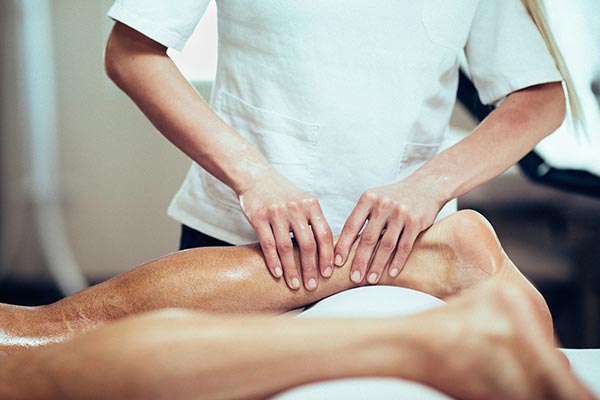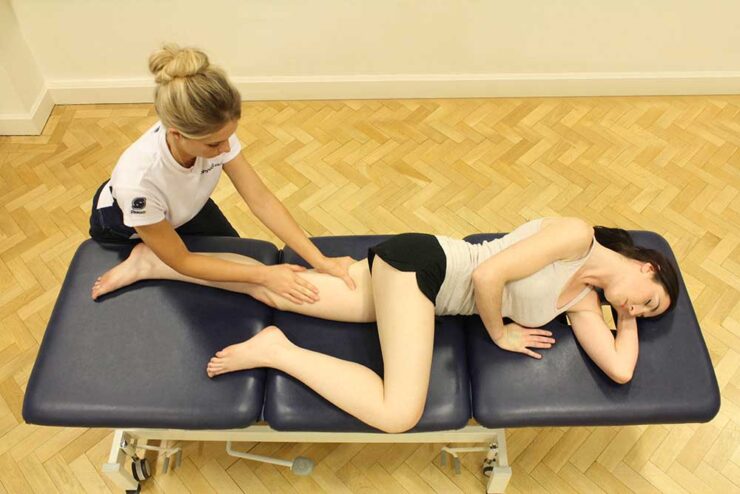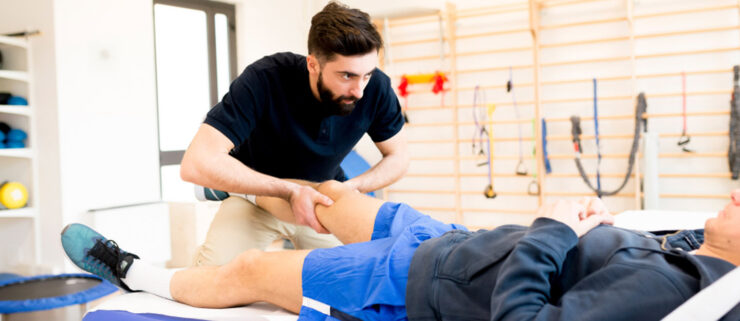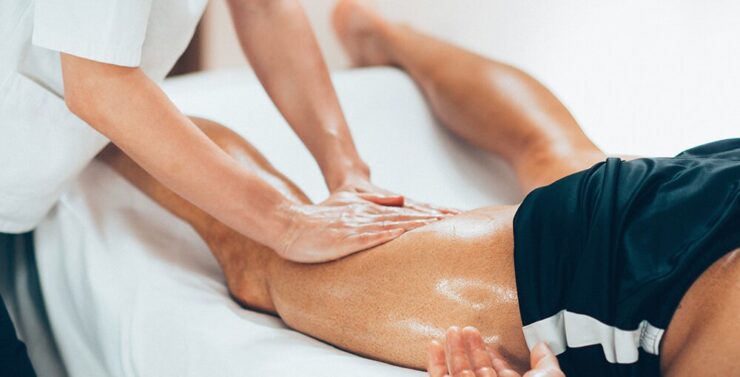Experiencing muscle soreness after a workout is a common phenomenon, often resulting from the stress placed on muscles during physical exertion. Known as delayed onset muscle soreness (DOMS), this discomfort typically occurs 24 to 48 hours post-exercise and can impede recovery and performance.
While rest and recovery are vital for overcoming DOMS, this therapy offers an effective way to alleviate soreness and expedite the healing process. By incorporating massage into a post-workout routine, athletes and fitness enthusiasts can experience enhanced muscle recovery, improved flexibility, and a reduced risk of injury.
Understanding the benefits of massage for post-workout muscle soreness can empower individuals to optimize their recovery strategies and enhance their overall fitness experience.
It can help improve circulation and nutrient delivery

One of the primary ways massage helps alleviate post-workout muscle soreness is by improving circulation and enhancing nutrient delivery to muscles. During a massage, the manipulation of soft tissues and muscles stimulates blood flow, which increases the delivery of oxygen and nutrients to the affected areas.
Improved circulation facilitates the removal of metabolic waste products, such as lactic acid, that accumulate during intense physical activity and contribute to muscle soreness. By promoting the efficient transport of essential nutrients and oxygen, massage aids in repairing damaged muscle fibers, reducing inflammation, and accelerating recovery.
Enhanced circulation not only supports the physical healing process but also contributes to a sense of relaxation and well-being. The increased blood flow helps soothe tight muscles, allowing them to relax and recover more effectively. As the muscles receive the nourishment they need, individuals experience reduced soreness and improved flexibility, enabling them to return to their fitness routines more quickly and with less discomfort.
It will reduce inflammation and tension in the muscles
This therapy is also effective in reducing inflammation and muscle tension, two common contributors to post-workout soreness. Intense exercise can lead to microscopic tears in muscle fibers, triggering an inflammatory response that results in pain and stiffness. Massage helps mitigate this inflammation by promoting lymphatic drainage and enhancing the body’s natural healing processes. By facilitating the removal of excess fluid and waste products, rubbing reduces swelling and supports faster recovery.
Additionally, techniques such as deep tissue session and myofascial release target areas of muscle tension and tightness, helping to release knots and adhesions that can exacerbate soreness. You can check out Makangs and see how the Seosan massage (서산마사지) can help not only with soreness but also other aches and pains that can occur. By applying targeted pressure to these areas, a therapists can break up scar tissue and improve muscle elasticity, reducing pain and increasing range of motion. The release of muscle tension not only alleviates soreness but also prevents the development of muscle imbalances that can lead to injury.
It can help enhance range of motion

Improving flexibility and range of motion is another key benefit of this therapy for post-workout recovery. Tight and sore muscles can limit mobility, making it difficult to perform exercises correctly and increasing the risk of injury. This therapy helps elongate muscle fibers and improve joint flexibility, allowing individuals to move more freely and efficiently. Techniques such as stretching, kneading, and joint mobilization are often incorporated into sessions to enhance flexibility and support optimal muscle function.
By increasing flexibility, this therapy not only alleviates soreness but also enhances overall athletic performance. Flexible muscles are less prone to injury and can better withstand the demands of physical activity. This improved resilience allows individuals to push themselves harder during workouts and achieve their fitness goals more effectively. Regular massage sessions can help maintain flexibility and prevent the buildup of tension and stiffness, supporting long-term physical health and performance.
It will help and support mental recovery as well
The benefits of this therapy extend beyond physical recovery, offering significant mental and emotional advantages that contribute to overall well-being. Intense workouts can lead to mental fatigue and stress, impacting mood and motivation. This therapy promotes relaxation and stress relief by reducing levels of cortisol, the body’s primary stress hormone, and encouraging the release of endorphins, the body’s natural mood elevators. This biochemical shift helps individuals feel more relaxed, focused, and emotionally balanced, supporting mental recovery and resilience.
In addition to its physiological effects, this therapy provides a valuable opportunity for mindfulness and self-care. The calming environment of a massage session encourages individuals to disconnect from daily stressors and focus on the present moment, promoting mental clarity and emotional well-being. This mindful approach to recovery can enhance self-awareness and foster a deeper connection with one’s body, empowering individuals to make informed decisions about their health and fitness.
These sessions can help prevent future pains and injuries

Regular therapy can also play a preventative role in managing muscle soreness and reducing the risk of future injuries. By maintaining muscle elasticity and flexibility, massage helps prevent the buildup of tension and scar tissue that can lead to chronic pain and dysfunction. This proactive approach to muscle health supports optimal performance and resilience, allowing individuals to engage in their fitness routines with confidence and ease.
Incorporating therapy into a regular wellness routine can help identify and address areas of muscle imbalance or tension before they develop into more significant issues. Skilled massage therapists can provide valuable insights into muscle health and offer personalized recommendations for maintaining optimal physical function.
By prioritizing preventative care, individuals can reduce the likelihood of injuries and enjoy a more sustainable and fulfilling fitness journey. Through the power of this therapy, individuals can support their body’s natural healing processes and achieve a greater sense of balance and vitality in their daily lives.
This therapy offers a comprehensive and effective approach to managing post-workout muscle soreness, enhancing recovery, and supporting overall wellness. By improving circulation, reducing inflammation, and promoting relaxation, this therapy helps individuals recover more quickly and efficiently from intense physical activity.
The benefits of massage extend beyond physical recovery, providing valuable mental and emotional support that enhances overall quality of life. Through consistent and mindful practice, this therapy can transform the way individuals approach recovery, leading to improved physical and mental well-being and a more vibrant and active lifestyle.
